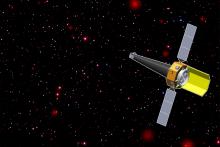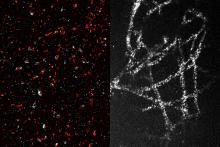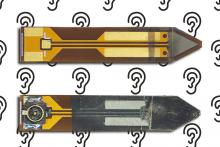Research Stories
 |
Startup gives surgeons a real-time view of breast cancer during surgery |
The drug-device combination developed by MIT spinout Lumicell is poised to reduce repeat surgeries and ensure more complete tumor removal. |
 |
“Wearable” devices for cells |
By snugly wrapping around neurons, these devices could help scientists probe subcellular regions of the brain, and might even help restore some brain function. |
 |
Oceanographers record the largest predation event ever observed in the ocean |
The scientists’ wide-scale acoustic mapping technique could help track vulnerable keystone species. |
 |
AXIS mission selected as NASA Astrophysics Probe competition finalist |
MIT Kavli Institute scientists and collaborators will produce a concept study to launch a $1B experiment to investigate the X-ray universe. |
 |
A new method makes high-resolution imaging more accessible |
Labs that can’t afford expensive super-resolution microscopes could use a new expansion technique to image nanoscale structures inside cells. |
 |
An interstellar instrument takes a final bow |
The Plasma Science Experiment aboard NASA’s Voyager 2 spacecraft turns off after 47 years and 15 billion miles. |
 |
Helping robots zero in on the objects that matter |
A new method called Clio enables robots to quickly map a scene and identify the items they need to complete a given set of tasks. |
 |
Startup’s displays engineer light to create immersive experiences without the headsets |
“We are adding a new layer of control between the world of computers and what your eyes see,” says Barmak Heshmat, co-founder of Brelyon and a former MIT postdoc. |
 |
Researchers return to Arctic to test integrated sensor nodes |
The nodes are intended to become part of a widespread sea-ice monitoring network. |
 |
Implantable microphone could lead to fully internal cochlear implants |
This tiny, biocompatible sensor may overcome one of the biggest hurdles that prevent the devices from being completely implanted. |
- 1 of 63
- next ›

